November 12 – November 25, 2015
On The Dock This Issue:
 |
Black, Brave, & Bold Part 1 - African American Congressional Medal of Honor Winners - Civil War Era During the Civil War, Sergeant William H. Carney became the first Black to win the award. |
|
|---|---|---|
| 50 Things the SC Officer & Teacher Could Have Done Yet words, calmly, but firmly spoken, always have been effective at motivating students to modify their behavior. |
||
| The World’s Top 5 Superstitions Research reveals that superstitions still strike fear in people’s hearts and impact their behavior and decisions. |
||
| Tea-Time with Benjamin Banneker "Being a Lipton and Tetley tea drinker, I now definitely see and can taste the difference between bag teas and leaf teas.” |
||
| 8 Reasons to Sign Up for Port Of Harlem If this issue is forwarded to you, signing up for Port Of Harlem now will enhance our ability to remain in business. |
||
| Activities Interesting, diverse things to do |
||
| Readers' Trends Port Of Harlem, Pininterest, and Facebook |
Praising the Past
Black, Brave, & Bold
Part 1 - African American Congressional Medal of Honor Winners - Civil War Era
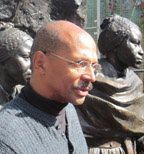
Black, Brave, & Bold
Part 1 - African American Congressional Medal of Honor Winners - Civil War Era

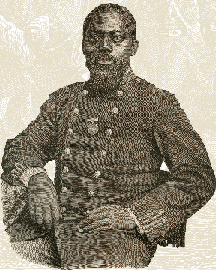 President Abraham Lincoln authorized the Congressional Medal of Honor (aka the Medal of Honor) during the American Civil War. The honor was then and still remains the United States highest award for military courage. The country developed the award to recognize outstanding "gallantry in action". Only 3,495 soldiers, sailors, marines, airmen, and coast guard personnel have been recipients. More than 80 African Americans (about 2 percent of the total awardees) have won the award. A few, including one woman and an African American sailor, have won more than one.
President Abraham Lincoln authorized the Congressional Medal of Honor (aka the Medal of Honor) during the American Civil War. The honor was then and still remains the United States highest award for military courage. The country developed the award to recognize outstanding "gallantry in action". Only 3,495 soldiers, sailors, marines, airmen, and coast guard personnel have been recipients. More than 80 African Americans (about 2 percent of the total awardees) have won the award. A few, including one woman and an African American sailor, have won more than one. During the Civil War, about two dozen African American soldiers and sailors earned Medals of Honor including Sergeant William H. Carney, who was the first African American to win the award. He was a member of the famed 54th Massachusetts Volunteers of African Descent profiled in the 1989 movie "Glory."
Carney was born on February 29, 1840 in Norfolk, Virginia. He was the son of manumitted slaves, according to the New Bedford Historical Society. His parents left Norfolk in order to get an education for young William. The family moved to Pennsylvania, New York City, and finally to New Bedford, Massachusetts. At the age of 23, he enlisted in Company C of the regiment. Four months later, along with the other men of his unit, Carney found himself in the bloody assault on Fort Wagner, one of the rebel forts guarding the harbor of Charleston, South Carolina as depicted in the film Glory.
On July 18, 1863, the citation for his medal records his actions: "when the color sergeant was shot down, this soldier grasped the flag, led the way to the parapet (a protective wall or earth defense), and planted the colors thereon. When the troops fell back, he brought off the flag, under a fierce fire in which he was twice severely wounded."
The November 1889 issue of the New Englander and Yale Review contained an article entitled "Our Indebtedness to the Negroes for Their Conduct During the War" by Joseph Roy. He reported that despite wounds and a shattered arm, Carney "brought to the rear the torn banner, stained with his own blood, shouting: ‘Boys it never touched the ground."’
Roy also quoted an eyewitness to the battle who wrote: “The bravery of this Colored regiment was so conspicuous as to revolutionize the sentiment of the Federal soldiers, a majority of whom had been opposed to the Colored soldiery up to that time. Those who had the most fiercely denounced their employment previously, after this assault expressed pleasure at being put in the same brigade with the Colored troops." Carney's actions were also mentioned by his new regimental commander in November 1863.
Carney's exploits ricocheted across the country and he became a highly regarded hero in the African American community. In 1901, in his classic autobiography "Up From Slavery," Booker T. Washington related that he had shared a stage with Carney at the dedication of a memorial to the regiment and its commander, Colonel R. G. Shaw, in Boston. When Carney raised the flag that he had carried at Fort Wagner, Washington wrote that "It has been my privilege to witness a good many satisfactory and rather sensational demonstrations in connection with some of my public addresses, but in dramatic effect I have never seen or experienced anything which equaled this. For a number of minutes the audience seemed to entirely lose control of itself."
Only 3,495 soldiers, sailors, marines, airmen, and coast guard personnel have been recipients. More than 80 African Americans (about 2 percent of the total awardees) have won the award.
Carney actually received his medal in 1900. Such delays happened to several other Civil War period Medal of Honor winners. (Andrew Jackson Smith, for an example, earned a Medal of Honor for bravery above and beyond the call of duty at the Battle of Honey Hill, South Carolina in 1864. His family did not receive it until 2001.)
From The Battle of Chaffin's Farm came 14 Medals of Honor winners - - all in one day. The battle took place north of a bend on the James River, not far from Richmond, Virginia, the capital of the Confederacy. This engagement is also known as New Market Heights. Although it only lasted for two days, September 29 and 30, 1864, the first day was one of the most bloodstained in African American military history. Black soldiers made up a relatively small part of the over 20,000 members of the attacking force, but made up 43% of the Union casualties and the 6th U.S. Colored Troops (USCT) lost 87% of its men.
Ultimately three brigades of men of African descent took part in the repeated assaults on heavily fortified positions. Below are some of the medal winners and an excerpt of what their citations read:
William Barnes, 38th USCT, "Among the first to enter the enemy's works; although wounded."
Miles James, 36th USCT, "Having had his arm mutilated, making immediate amputation necessary, he loaded and discharged his piece with one hand and urged his men forward; this within 30 yards of the enemy's works."
James Daniel Gardiner, 36th USCT, "Rushed in advance of his brigade, shot a rebel officer who was on the parapet rallying his men, and then ran him through with his bayonet."
These men changed America, defied expectations, and provided the ladder for others to succeed. Another glaring example is medal winner Christian A. Fleetwood, 4th USCT, from Baltimore. He saved the unit's flags or took command of the units when the White officers had been killed or wounded - - and this at a time when most Whites considered Black men unfit and unable to be officers.
Publisher’s Note: Part 2 of this 5 part series will appear in an upcoming issue of Port Of Harlem.
Only 3,495 soldiers, sailors, marines, airmen, and coast guard personnel have been recipients. More than 80 African Americans (about 2 percent of the total awardees) have won the award.
Carney actually received his medal in 1900. Such delays happened to several other Civil War period Medal of Honor winners. (Andrew Jackson Smith, for an example, earned a Medal of Honor for bravery above and beyond the call of duty at the Battle of Honey Hill, South Carolina in 1864. His family did not receive it until 2001.)
From The Battle of Chaffin's Farm came 14 Medals of Honor winners - - all in one day. The battle took place north of a bend on the James River, not far from Richmond, Virginia, the capital of the Confederacy. This engagement is also known as New Market Heights. Although it only lasted for two days, September 29 and 30, 1864, the first day was one of the most bloodstained in African American military history. Black soldiers made up a relatively small part of the over 20,000 members of the attacking force, but made up 43% of the Union casualties and the 6th U.S. Colored Troops (USCT) lost 87% of its men.
Ultimately three brigades of men of African descent took part in the repeated assaults on heavily fortified positions. Below are some of the medal winners and an excerpt of what their citations read:
William Barnes, 38th USCT, "Among the first to enter the enemy's works; although wounded."
Miles James, 36th USCT, "Having had his arm mutilated, making immediate amputation necessary, he loaded and discharged his piece with one hand and urged his men forward; this within 30 yards of the enemy's works."
James Daniel Gardiner, 36th USCT, "Rushed in advance of his brigade, shot a rebel officer who was on the parapet rallying his men, and then ran him through with his bayonet."
These men changed America, defied expectations, and provided the ladder for others to succeed. Another glaring example is medal winner Christian A. Fleetwood, 4th USCT, from Baltimore. He saved the unit's flags or took command of the units when the White officers had been killed or wounded - - and this at a time when most Whites considered Black men unfit and unable to be officers.
Publisher’s Note: Part 2 of this 5 part series will appear in an upcoming issue of Port Of Harlem.
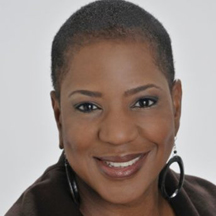 I am sickened by what took place in a South Carolina classroom where an officer tossed a young woman across a classroom. Officer Ben Fields was rightfully fired, yes, because no adult should ever violate a student in that way. Every adult who has responsibility for a child's welfare needs to know there are numerous ways to speak to children so that they follow adult guidance, if it is sincere, and in their best interest.
I am sickened by what took place in a South Carolina classroom where an officer tossed a young woman across a classroom. Officer Ben Fields was rightfully fired, yes, because no adult should ever violate a student in that way. Every adult who has responsibility for a child's welfare needs to know there are numerous ways to speak to children so that they follow adult guidance, if it is sincere, and in their best interest.I understand how tension and anxiety can build when students don't initially cooperate with our requests. I have worked with every kind of so-called "disruptive" and "disobedient" child imaginable - - from pre-school to high school - - and on a daily basis. It's challenging and can be draining.
Yet words, calmly, but firmly spoken, always have been effective at motivating students to modify their behavior in a way that adults and children both win -- and that always should be the goal. Imagine if the officer or teacher had calmly said to the student, "I need you to hand me your phone," or "You're a wonderful student, and I want you to continue having a good experience in this class. Would you hand me your phone?" or, "I promise if you hand me your phone, you're going to learn more about what's being taught and you'll enjoy it."
As mild as these phrases might seem, they pack a load of power in defusing tension. Here are just a few more phrases that will work for any adult with any child: How can I help you? I need you to... Thank you for... I promise...You're a wonderful student (person).
These phrases keep children open and make it much easier for them to communicate how they feel. Once they feel comfortable, they are much more likely to respond to your requests. And we always should make requests instead of demands, because demands inspire resistance, anger, and rebellion.
Click here for 45 more positive relationship building phrases and concepts that will help adults motivate students to respond to their requests.
Publislher's Note: Caroline Brewer is a classroom teacher, children's book author, education consultant, and author of “The Happy Teacher," "Parent Power: How to Raise a Reading Superstar,” “Why I Teach: A Guide to Re-Discovering the Love of Teaching,” and the forthcoming "Let's Teach Writing!"
As mild as these phrases might seem, they pack a load of power in defusing tension. Here are just a few more phrases that will work for any adult with any child: How can I help you? I need you to... Thank you for... I promise...You're a wonderful student (person).
These phrases keep children open and make it much easier for them to communicate how they feel. Once they feel comfortable, they are much more likely to respond to your requests. And we always should make requests instead of demands, because demands inspire resistance, anger, and rebellion.
Click here for 45 more positive relationship building phrases and concepts that will help adults motivate students to respond to their requests.
Publislher's Note: Caroline Brewer is a classroom teacher, children's book author, education consultant, and author of “The Happy Teacher," "Parent Power: How to Raise a Reading Superstar,” “Why I Teach: A Guide to Re-Discovering the Love of Teaching,” and the forthcoming "Let's Teach Writing!"
In a world of self-sanitizing door handles and wristwatches that allow people to play music, answer calls, and track their heart rate simultaneously, it’s hard to believe that people still believe in old wives’ tales. Yet research from Queendom reveals that superstitions, like broken mirrors and ancient Egyptian curses, not only strike fear in people’s hearts, they also continue to impact their behavior and decisions.
Analyzing data from 14,958 people who took the Paranormal Beliefs Test, researchers at Queendom uncovered interesting gender, age, and ethnic differences. Here are the top five superstitions that people believe in (to at least some degree):
#5 Broken mirror: Breaking a mirror is still considered bad luck for a third of people surveyed.
· Ethnicity differences: Belief in this superstition was strongest among Jewish people and Native Americans at 36%, and lowest among Middle Easterners at 25%.
· Gender differences: 38% of women believe in this superstition, compared to 20% of men.
· Age differences: Belief in this superstition decreases with age from 35% (under 18) to 27% (over 40).
#4 Egyptian tombs: Nearly half of the people surveyed believe that a curse awaits anyone who disturbs an ancient Egyptian tomb.
· Ethnicity differences: Belief in this superstition was strongest among Middle Easterners at 55%, and lowest among Blacks at 45%.
· Gender differences: 53% of women believe in this superstition, compared to 38% of men.
· Age differences: Belief in this superstition decreases with age from 51% (under 18) to 44% (over 40).
Analyzing data from 14,958 people who took the Paranormal Beliefs Test, researchers at Queendom uncovered interesting gender, age, and ethnic differences. Here are the top five superstitions that people believe in (to at least some degree):
#5 Broken mirror: Breaking a mirror is still considered bad luck for a third of people surveyed.
· Ethnicity differences: Belief in this superstition was strongest among Jewish people and Native Americans at 36%, and lowest among Middle Easterners at 25%.
· Gender differences: 38% of women believe in this superstition, compared to 20% of men.
· Age differences: Belief in this superstition decreases with age from 35% (under 18) to 27% (over 40).
#4 Egyptian tombs: Nearly half of the people surveyed believe that a curse awaits anyone who disturbs an ancient Egyptian tomb.
· Ethnicity differences: Belief in this superstition was strongest among Middle Easterners at 55%, and lowest among Blacks at 45%.
· Gender differences: 53% of women believe in this superstition, compared to 38% of men.
· Age differences: Belief in this superstition decreases with age from 51% (under 18) to 44% (over 40).
#3 Number 7: Unlike the negativity surrounding number 13, more than half of the people believe that 7 is a very auspicious number.
· Ethnicity differences: Belief in this superstition was strongest among Native Americans at 62%, and lowest among Middle Easterners at 51%.
· Gender differences: 58% of women believe in this superstition, compared to 46% of men.
· Age differences: Belief in this superstition varied with age. It was highest among the youngest and older age groups at 56% and 55% respectively, and lowest among 18 to 24 year olds (51%).
#2 Jinxes: In order to avoid “jinxing” themselves, every second person surveyed refuses to tempt fate by discussing a future event or outcome before it happens.
· Ethnicity differences: Belief in this superstition was strongest among Native Americans at 61%, and lowest among Asians at 54%.
· Gender differences: 61% of women believe in this superstition, compared to 44% of men.
· Age differences: Belief in this superstition varied with age, but was highest among 25 to 29 year olds at 59% and lowest among people 40 and older (49%).
#1 Negativity: More than just a passing new age fad, more than half of the people surveyed believe that thinking negative thoughts can cause bad things to happen.
· Ethnicity differences: Belief in this superstition was strongest among Native Americans at 67%, and lowest among Caucasians at 55%.
· Gender differences: 62% of women believe in this superstition, compared to 49% of men.
· Age differences: Belief in this superstition once again varied with age, but was highest among 25 to 29 year olds at 61% and lowest among people 40 and older (54%).
Assess your paranormal beliefs?
· Ethnicity differences: Belief in this superstition was strongest among Native Americans at 62%, and lowest among Middle Easterners at 51%.
· Gender differences: 58% of women believe in this superstition, compared to 46% of men.
· Age differences: Belief in this superstition varied with age. It was highest among the youngest and older age groups at 56% and 55% respectively, and lowest among 18 to 24 year olds (51%).
#2 Jinxes: In order to avoid “jinxing” themselves, every second person surveyed refuses to tempt fate by discussing a future event or outcome before it happens.
· Ethnicity differences: Belief in this superstition was strongest among Native Americans at 61%, and lowest among Asians at 54%.
· Gender differences: 61% of women believe in this superstition, compared to 44% of men.
· Age differences: Belief in this superstition varied with age, but was highest among 25 to 29 year olds at 59% and lowest among people 40 and older (49%).
#1 Negativity: More than just a passing new age fad, more than half of the people surveyed believe that thinking negative thoughts can cause bad things to happen.
· Ethnicity differences: Belief in this superstition was strongest among Native Americans at 67%, and lowest among Caucasians at 55%.
· Gender differences: 62% of women believe in this superstition, compared to 49% of men.
· Age differences: Belief in this superstition once again varied with age, but was highest among 25 to 29 year olds at 61% and lowest among people 40 and older (54%).
Assess your paranormal beliefs?
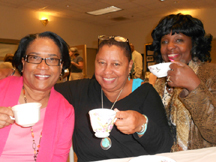 On the farm that Benjamin Banneker’s father purchased in 1737 and in which the more famous Banneker was raised and lived on, food historian Joyce White discussed the teas that the Bannekers would have been able to consume, their characteristics, history of use, and sale in colonial Maryland.
On the farm that Benjamin Banneker’s father purchased in 1737 and in which the more famous Banneker was raised and lived on, food historian Joyce White discussed the teas that the Bannekers would have been able to consume, their characteristics, history of use, and sale in colonial Maryland. Chocolate, she said, was “more of a morning drink,” during Banneker’s time, while tea was the drink a host or hostess would offer guests. Coffee, she continued, “did not become popular until the Civil War.”
Black and green leaf teas were the most popular, with the best teas being hand-picked. (Many popular, affordable teas today, she said, are machine picked and bagged.) With a bit of history during the event came tea tasting breaks. “Being a Lipton and Tetley tea drinker, I now definitely see and can taste the difference between bag teas and leaf teas,” said Ainsley Starghill of Baltimore after a couple of sips of leaf tea.
Like winemakers, where tea farmers grow their teas and how they process the plants affect their taste and value. Popular green teas, for example, are not oxidized and are the “most authentic in flavor,” added White, “and with most of the anti-oxidants” remaining in the leaves.
Banneker was a scientist, astronomer, mathematician, abolitionist, surveyor, farmer, almanac publisher of Wolof heritage. The Benjamin Banneker Historical Park and Museum is in Catonsville, Maryland, just west of Baltimore City.
Like winemakers, where tea farmers grow their teas and how they process the plants affect their taste and value. Popular green teas, for example, are not oxidized and are the “most authentic in flavor,” added White, “and with most of the anti-oxidants” remaining in the leaves.
Banneker was a scientist, astronomer, mathematician, abolitionist, surveyor, farmer, almanac publisher of Wolof heritage. The Benjamin Banneker Historical Park and Museum is in Catonsville, Maryland, just west of Baltimore City.
With a subscription, we will deliver Port Of Harlem to your e-mail box every other Thursday at no cost to you. If this issue is forwarded to you by a friend, signing up for Port Of Harlem will enhance our ability to remain in business.
Sign-up today and don’t miss the informative articles from our diverse contributors including C.R. Gibbs (history); Dr. Theo Hodge (health), Jr; Kennedra Tucker (health/features); Catherine Abrams (entertainment/features); Gregory Bearstop (inspirational); Nick Abrams (money); Sherry Ways (interior design); and Wayne Young (editorial/features).
Sign-up today and don’t miss the informative articles from our diverse contributors including C.R. Gibbs (history); Dr. Theo Hodge (health), Jr; Kennedra Tucker (health/features); Catherine Abrams (entertainment/features); Gregory Bearstop (inspirational); Nick Abrams (money); Sherry Ways (interior design); and Wayne Young (editorial/features).
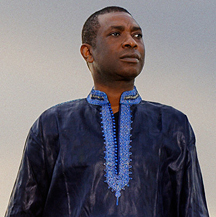
Washington, DC
Youssou N'Dour in Concert
Lisner Auditorium
The George Washington University
730 21st Street, NW
Tue, Nov 17, 8p, $
Angola Day: Angola at 40
Woodrow Wilson Center
1300 Pennsylvania Ave
Wed, Nov 18, 8:30a-5:30, free
Freddie Dunn Jazz Ensemble
A Conversation with Freddie Dunn
Dorothy I Height Benning Library
3935 Benning Rd NE
Sat, Nov 21, 2p, free
Dallas, TX
Three Redneck Tenors Live!
Clarence Muse Café Theater
Fri, Nov 13 & Sat, Nov 14, 8:15p, $20
A Conversation with Freddie Dunn
Dorothy I Height Benning Library
3935 Benning Rd NE
Sat, Nov 21, 2p, free
Dallas, TX
Three Redneck Tenors Live!
Clarence Muse Café Theater
Fri, Nov 13 & Sat, Nov 14, 8:15p, $20
| From the Last Issue | On Pininterest | On Facebook | On Website | ||
|---|---|---|---|---|---|
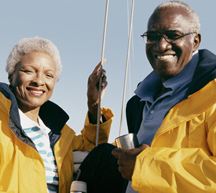 Raising the Retirement Age Hurts Blacks |
 Let's Go On Vacation May-Jul 09 Issue |
 John Henry: Disney Made A Cartoon About African-American Heroes That Most People Don’t Know About |
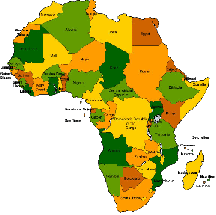 Features (department of Port Of Harlem) |
Connect with Port Of Harlem
 |
Find Port Of Harlem on Facebook |
|---|---|
 |
Follow Port Of Harlem on Twitter |
 |
See Port Of Harlem pins on Pinterest |




